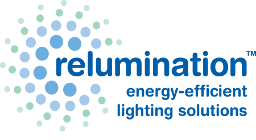Retail lighting should do more than merely illuminate a store. It should welcome and draw customers in the door. How is this done? By creating an attractive ambiance unique to your store. This is already common practice in the paint color choices of store interiors. But establishing ambiance through effective use of lighting is under-exploited, especially through effective use of LED lighting.
Ambiance starts with using the right light color temperature. For those unfamiliar with the term “color temperature,” it’s a way of describing the warmth, coolness, or brightness of white light. For example, light from a fireplace has a warm if somewhat dim appearance. Incandescent lighting also has a degree of warmth. Sunlight however, is very bright and resembles neither fire light nor incandescent light. Color temperature is measured in degrees Kelvin (K). This is the temperature you would need to heat up a block of carbon to produce the same type of light. This is only a convention used to describe the light quality. LED lights produce very little heat, but can put out light with different color temperatures.
There are three color temperatures:
- Warm white light. Warm white light has a temperature range between 2000 K to 3000 K. It has a yellowish white appearance and produces a cozy and intimate effect. It works best where you want to create a relaxed and intimate atmosphere.
- Cool white light. Cool white light has a temperature range of 3100 K to 4500 K. This light temperature is bright and vibrant. Its color is white with a slight blue tinge. It works well when you wish to emphasize the natural colors of your merchandise.
- Daylight light. Daylight light as the name suggests, simulates daylight. It has a temperature range of 4600 K to 6500 K. The light is white with blue in it. Like being out in the sunshine, it produces an invigorating effect. This works to great effect when selling outdoor goods.
LED lights with adjustable color temperature are available so that you can get it just right. This also allows you to adjust the light temperature of different sections of your store to different settings.
Other effects possible with LEDs include:
- Adding accent colors to walls and ceilings. This is a less committing way of adding accents than using paint. If you don’t like it or would like to experiment, change the color of the lighting.
- Skylights. Rather than cutting a hole in your roof, install an LED skylight panel. Some are white in color but appear as though real sunlight is shining through them. Others simulate clouds against a blue sky. These sky lights also put out the same white light that you encounter outdoors on a sunny day. However, they don’t emit ultra violet. This works well when selling outdoor goods such as camping gear, fishing gear, or lawn and garden products.
- Texture emphasis. LED lights that shine across the surface of brick or stone surfaces, cast shadows that emphasize their attractive texture. Experiment with different colors such as reds, blues, or purple.
